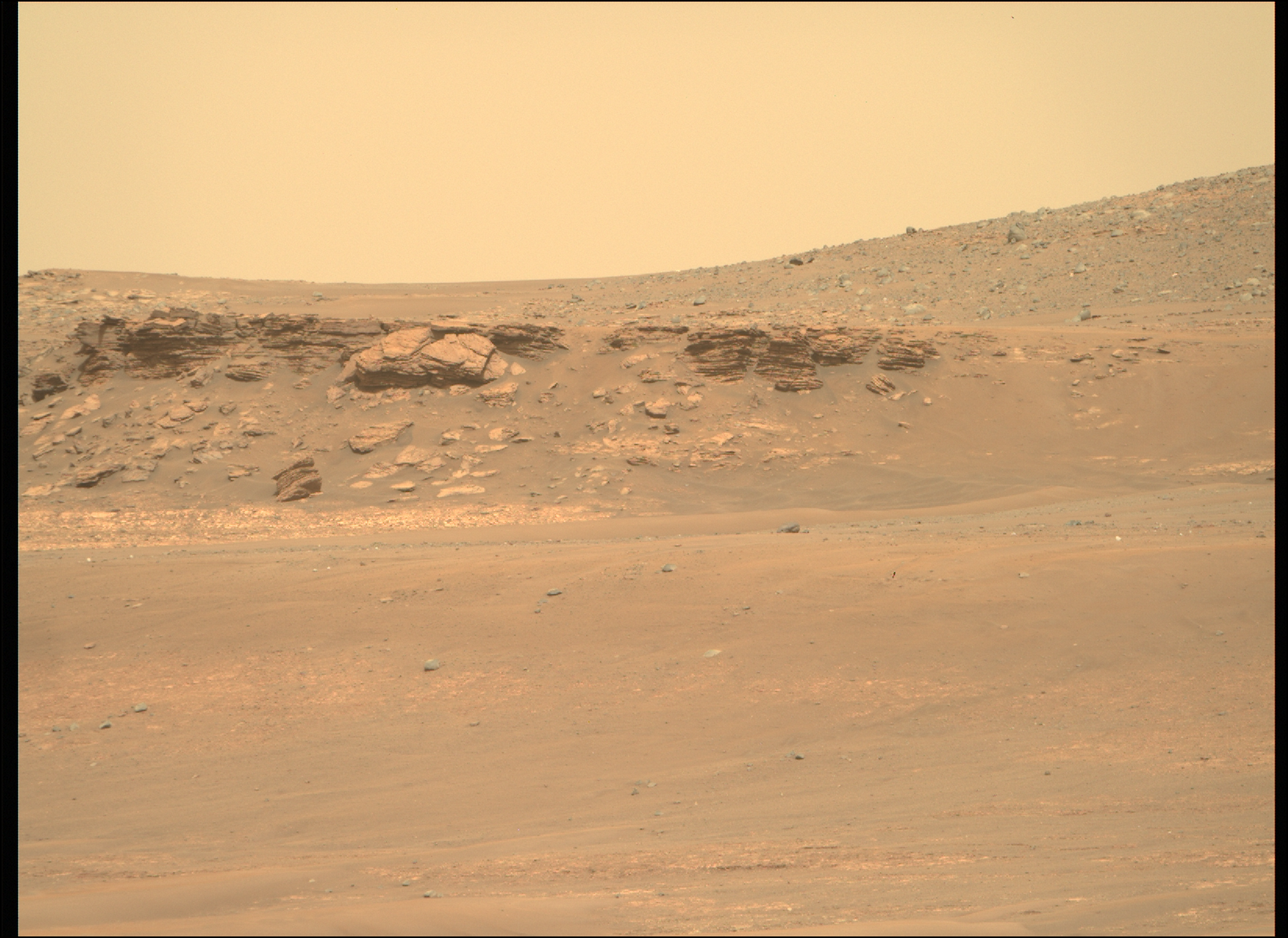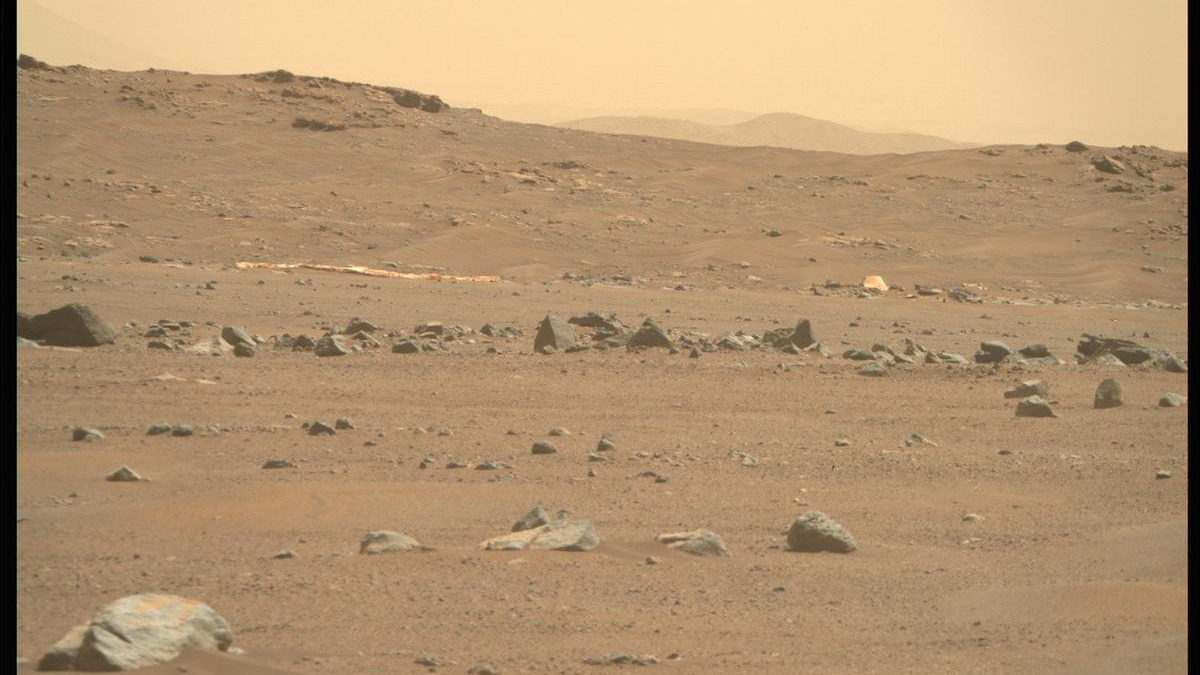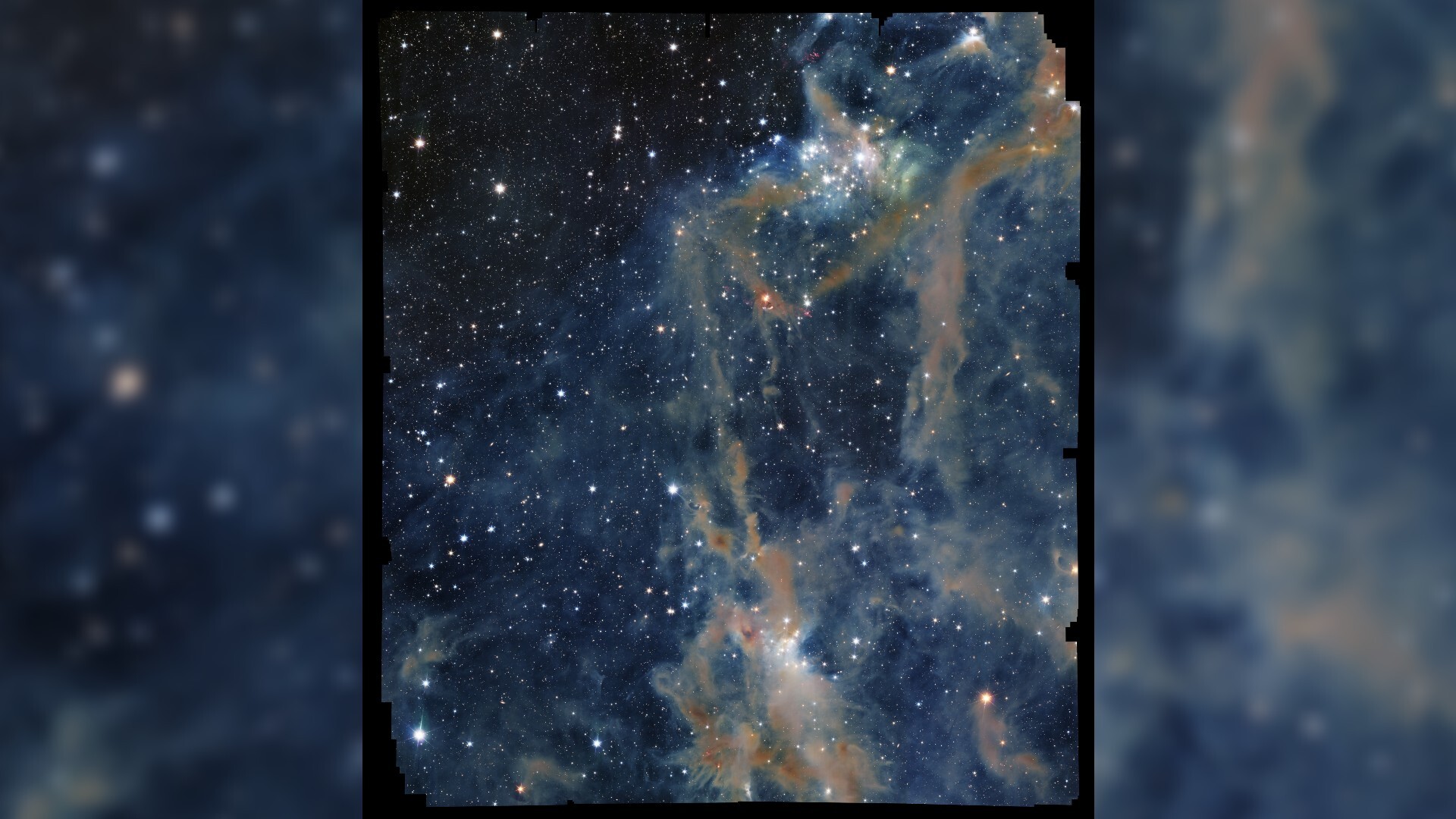Perseverance rover arrives at ancient Mars river delta

NASA's life-hunting Perseverance Mars rover just reached a big mission milestone.
Perseverance has arrived safely at the remains of an ancient Red Planet river delta on the floor of the 28-mile-wide (45 kilometers) Jezero Crater, NASA announced today (April 19).
Mission team members said the delta will be a "veritable geologic feast" for Perseverance, which is hunting for signs of fossilized Mars life. (The most promising rocks will be cached for a sample-return mission campaign that NASA and its European counterpart intend to launch later this decade.)
"We've been eyeing the delta from a distance for more than a year while we explored the crater floor," Ken Farley, Perseverance project scientist at the California Institute of Technology, said in a statement Wednesday (April 19) from NASA's Jet Propulsion Laboratory (JPL), which manages Perseverance's mission.
Now that the rover is in the region, its next moves will be "obtaining images of ever-greater detail revealing where we can best explore these important rocks," Farley added.
Related: 12 amazing photos from the Perseverance rover's 1st year on Mars
Perseverance landed in February 2021 inside Jezero Crater, which mission scientists have said hosted a lake and a river delta billions of years ago. Such conditions should be amenable to microbes, meaning the delta region is a rich area to search for signs of Mars life (if it ever existed).
Breaking space news, the latest updates on rocket launches, skywatching events and more!
The rover was working somewhat south and west of its landing site during its first (Earth) year on Mars but recently made it way back through the touchdown area to get to the delta. Perseverance will spend about the next week driving to the southwest, and the west, to figure out how best to explore this patch of the delta.
Perseverance's data suggests that the delta deposits are about 130 feet (40 meters) above the crater floor, and the teams are considering two options, according to the JPL statement. The preferred route, at least for now, is through a region nicknamed "Hawksbill Gap," as it appears to be reachable in a shorter time. But a backup option, "Cape Nukshak," is available in case data in the coming days shows it to be a safer route.

"Whichever route Perseverance takes to the plateau atop the delta, the team will perform detailed science investigations, including taking rock core samples, on the way up, then turn around and do the same thing on the way back down," JPL officials said in the statement.
The rover will spend roughly six months picking up eight samples during this maneuvering campaign, called Delta Front. The plan then calls for Perseverance to go on top of the delta again, perhaps taking the backup option to sample a region untraveled before, to spend six more months on a "Delta Top Campaign."
"The delta is why Perseverance was sent to Jezero Crater: It has so many interesting features," Farley said. "We will look for signs of ancient life in the rocks at the base of the delta, rocks that we think were once mud on the bottom of 'Lake Jezero.'"
Perseverance will also attempt to pick up sand and rock fragments originating from upstream, in areas that the rover is not expected to visit during its lifetime on Mars. Farley said the geography will be an immense help: "We can take advantage of an ancient Martian river that brought the planet's geological secrets to us."
JPL officials added that Perseverance began its second science campaign a month earlier than expected, due to its upgraded autonomous hazard-detection system that allows it to dodge obstacles in Jezero Crater such as boulders, sharp rocks, craters and sandpits. (The rover was commanded to halt and turn in place 55 times to avoid hazards during this latest road trip, JPL added.)
By contrast, NASA's decade-older Curiosity Mars rover had to turn back recently from a planned route due to dangerous "gator-back" terrain. Curiosity also sports an older version of Martian wheel less optimized for the sometimes treacherous terrain, as compared to Perseverance. JPL officials say that Percy's wheels have twice as many treads and a gentle curve, which is more adaptable to the terrain.
Follow Elizabeth Howell on Twitter @howellspace. Follow us on Twitter @Spacedotcom or Facebook.

Elizabeth Howell (she/her), Ph.D., was a staff writer in the spaceflight channel between 2022 and 2024 specializing in Canadian space news. She was contributing writer for Space.com for 10 years from 2012 to 2024. Elizabeth's reporting includes multiple exclusives with the White House, leading world coverage about a lost-and-found space tomato on the International Space Station, witnessing five human spaceflight launches on two continents, flying parabolic, working inside a spacesuit, and participating in a simulated Mars mission. Her latest book, "Why Am I Taller?" (ECW Press, 2022) is co-written with astronaut Dave Williams.
